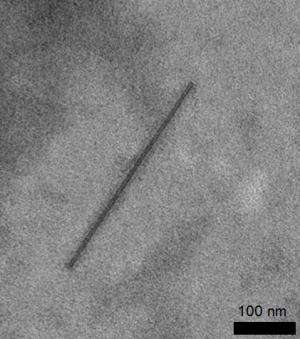Learning the language of biomolecular assembly

The National Physical Laboratory (NPL) will carry out unique experiments to investigate biomolecular self-assembly at UK and EU synchrotron facilities.
From infection to tissue regeneration, biomolecular self-assembly underpins all biological processes. Often viewed as an 'intermolecular language', it encodes the bottom-up assembly of individual molecules into the complex architectures of viruses and tissues.
Despite significant progress in the area, a deterministic measure of biomolecular self-assembly is lacking. This would provide predictable relationships between molecular assembly and function, which can underpin various applications in healthcare and advanced manufacturing.
Understanding these relationships requires knowledge of how molecules communicate with one another, and how unique these are in specific assembly pathways.
In an effort to help decipher this language, NPL Biotechnology scientists have recently been awarded five separate beamtime sessions at the Diamond Light Source, the Léon Brillouin Laboratory (Saclay, France) and the European Synchrotron Radiation Facility (ESRF, France). They will perform a series of unique high resolution experiments at these facilities to help extract substantial information on key self-assembly processes.
Emiliana De Santis, who works on the project at NPL, said:
"These measurements will allow us to collect data in information-rich spectral regions that are inaccessible by conventional techniques. What makes these measurements unique is the way that they will probe the direct impact of mechanistic assembly on biology."
The experiments will benefit from synchrotron radiation, which can be thought of as a special type of light generated by accelerating electrons to very high speeds. By using this light, rather than visible light, scientists can study the ordering of small objects such as individual molecules, which cannot be done using optical microscopes.
In these experiments, the synchrotron light will be applied to techniques called Circular Dichroism spectroscopy (SRCD), Small Angle X-ray scattering (SAXS) and Small Angle Neutron Scattering (SANS). They aim to measure model protein assemblies that emulate naturally occurring protein filaments, extracellular matrices and virus-like capsules.
Valeria Castelletto, who leads work on small angle scattering measurements at NPL, said:
"Protein assemblies are ordered nanostructures that, at any stage of the assembly process, exhibit repeat distances. These can be assigned to small angle scattering patterns which, when complemented by electron microscopy data, will allow us to precisely reconstruct the assembly."
The awarded beamtimes provide an excellent example of a substantial investment by National and European research programmes into NPL's strategic ambition to develop a coherent measurement capability in biophysical systems. This capability is vital to support the development of molecular medicines with the potential to address global health issues such as viral epidemics, antibiotic resistance and cancer.
Provided by National Physical Laboratory



















